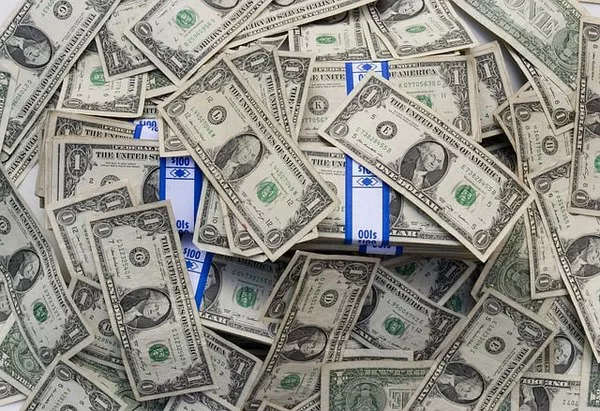In the world of numismatics, the study and collection of currency, certain bills stand out not only for their historical significance but also for their rarity and potential worth. One such note is the 1963 red two dollar bill, a unique piece of U.S. currency that has captured the fascination of collectors and enthusiasts. In this article, we delve into the story behind this bill, its characteristics, and most importantly, its value in today’s market.
A Brief History of the 1963 Red Two Dollar Bill
The 1963 red seal two dollar bill is part of the United States’ series of notes that were printed in the early 1960s. These bills, unlike the modern green seal notes, were distinctive for their red seal and serial numbers. The red seal bills were issued as a part of the United States Notes series, which were a form of paper currency issued directly by the U.S. Treasury.
The 1963 series of two dollar bills was printed in large numbers, including both red and green seal varieties. The red seal notes were printed for several years in the early 1960s, making them relatively common compared to some older or more limited-issue bills. Despite their availability in the past, the passage of time and the natural attrition of paper currency have contributed to the scarcity of pristine examples today.
Understanding the Rarity and Condition
The value of any collectible currency, including the 1963 red two dollar bill, is influenced greatly by its rarity and condition. In the case of this specific bill, rarity plays a crucial role. While many were originally printed, finding a well-preserved, uncirculated red seal note from 1963 has become increasingly challenging.
Condition is another key factor. Collectors generally prefer bills that are in excellent or uncirculated condition. This means the bill should have no folds, creases, tears, or significant signs of wear. The quality of the printing and the paper itself also contribute to the overall condition assessment.
Determining the Value
To ascertain the value of a 1963 red two dollar bill, collectors and dealers consider a variety of factors:
Condition: As mentioned earlier, the bill’s state of preservation significantly impacts its value. An uncirculated, pristine red seal two dollar bill from 1963 will command a higher price than one that shows signs of wear.
Rarity: While not as scarce as some other types of currency, the 1963 red seal two dollar bill is still sought after by collectors due to its unique appearance and historical significance.
Demand: Market demand plays a crucial role in determining value. If there’s a surge of interest in a particular type of currency or if collectors are actively seeking a specific bill, prices can rise accordingly.
Authentication: Ensuring the authenticity of any collectible currency is paramount. Bills should be verified by reputable experts or third-party grading services to confirm their legitimacy and quality.
Market Trends and Prices
In recent years, the value of the 1963 red seal two dollar bill has shown a steady increase, particularly for bills in excellent condition. Prices can vary widely depending on the bill’s rarity, grade, and current market demand. As of [current year], an uncirculated red seal two dollar bill from 1963 could fetch anywhere from [price range] at auction or through specialized currency dealers.
Factors That Influence Value Over Time
The value of collectible currency, including the 1963 red two dollar bill, is subject to fluctuation based on several external factors:
Economic Conditions: Shifts in the economy can impact the value of currency. In times of economic uncertainty, investors often turn to tangible assets like rare bills and coins, which can drive up prices.
Collector Trends: Trends within the numismatic community can influence demand and subsequently affect prices. For instance, a renewed interest in mid-century U.S. currency might lead to increased demand for bills like the 1963 red seal two dollar note.
Popularity of Numismatics: The overall popularity of coin and currency collecting as a hobby can also impact prices. Increased interest can lead to more buyers and higher bids at auctions.
See also How Close Is The Dollar To Collapse?
Conclusion
In conclusion, the 1963 red two dollar bill represents a fascinating piece of American currency history. While not exceedingly rare, these bills are valued for their unique design, historical significance, and relative scarcity in pristine condition. The value of a 1963 red two dollar bill can vary widely based on its rarity, condition, and market demand.
For collectors and enthusiasts, owning a well-preserved example of this iconic bill can be a source of pride and a tangible connection to America’s past. As with any investment, it’s essential to research thoroughly, consult with experts, and stay informed about market trends when considering the purchase or sale of a 1963 red seal two dollar bill.
Ultimately, the allure of numismatics lies not just in the pursuit of monetary gain but in the appreciation of these unique artifacts that tell the story of our nation’s currency evolution. The 1963 red two dollar bill is a shining example of the rich tapestry of American currency, waiting to be explored and cherished by collectors old and new.


